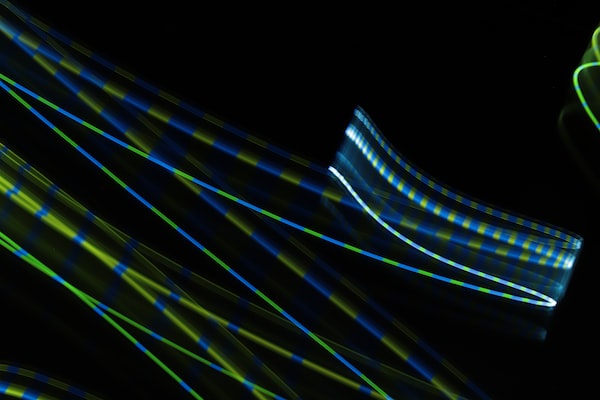Laser cutting is one of the most popular industrial processes used to cut and shape materials. When it comes to laser cutting, understanding the speed of cutting and the factors that affect it is crucial for achieving the desired results. In this article, we will discuss the overview of laser cutting speeds and the various factors that can influence them. We will explore the different types of laser cutting, the types of materials that can be cut, and the techniques that can be used to increase the cutting speed.
Factors That Affect Cutting Speeds
Machining Parameters
When laser cutting, the speed of the cutting is determined by a number of different machining parameters. These include the laser power, speed, focus position and auxiliary gas pressure. The cutting speed is usually higher when the laser power is higher, however, if the speed is too fast then the material may not be cut through correctly.
Laser Power
One of the key factors that affect the cutting speed of laser cutting is the laser power. In general, when the beam is more powerful, the laser can cut more quickly and accurately. The higher the power output, the more energy the laser has, and the more efficiently it can cut through the material.
The power of the laser beam is what directly determines the cutting speed. When the power output of the laser is set too low, the speed of the laser will be much slower and may often be lower than that of other forms of cutting.
Material Thickness
When it comes to laser cutting speeds, material thickness is an important factor. The cutting speed is inversely proportional to the density (specific gravity) and thickness of the material being cut. Laser cutting is often faster than other cutting methods, but that is only up to a certain thickness.
After a certain point, the laser speed drastically decreases on thick metal surfaces. This is because the power used by the laser often becomes the limiting factor when cutting thick materials. The laser power and the focus position of the beam used will also affect the cutting speed.
Machine Mechanics
When it comes to laser cutting speeds, machine mechanics play a major role. Factors such as laser power, focus position, and auxiliary gas pressure all affect the cutting speed. Overall, laser cutting is often a much quicker process than other methods of cutting, such as water jet or plasma, and can easily exceed them in speed up to a certain thickness.
The cutting speed of a laser is inversely proportional to the density (specific gravity) and thickness of the material being cut. This means that if the cutting speed is too fast, the material will not be cut through.

Detailed Look At Laser Cutting Speeds
Metals
When it comes to laser cutting, the speed at which materials can be cut is a key factor to consider. Cutting speed often determines the quality of the finished product. But when it comes to metals, laser cutting speeds can be a bit of a tricky thing.
When cutting through sheet metal, lasers usually beat conventional cutting methods in terms of speed, up to a certain thickness. This is because the laser is able to make small, precise cuts, providing an efficient and cost-effective result.
Non Ferrous Metals
Non-ferrous metals such as aluminum, brass and copper are very popular materials for laser cutting. Laser cutting is often used for thin components for industrial or manufacturing purposes. While many non-ferrous metals may react differently when laser cutting due to their varying elemental makeups, the cutting speed of these metals can often be quite a bit slower than the cutting speeds of ferrous metals.
The cutting speed of non-ferrous metals can vary drastically depending on the laser power, focus position, and auxiliary gas pressure being used by the cutter.
Woods & Plastics
When it comes to cutting woods and plastics, laser cutting is often a great choice due to its high precision and ability to cut through both materials with great speed. The speed and accuracy of laser cutting is affected by a number of factors, and of course, the thickness of the material being cut is one of the most important. Woods and plastics cut with laser are usually much thinner than materials like metals, so the cutting speed for these materials is often much higher than for harder materials.

Typical Cutting Speeds
Outlining
Outlining is an essential part of the laser cutting process, as it helps to determine the speed and accuracy of the cut. When outlining materials, the speed of the laser significantly affects the production accuracy and time required to complete the job. Therefore, understanding laser cutting speeds and the factors that affect them is essential.
The speed of a laser cut is determined by several factors.
Rastering
Rastering is a method of laser cutting that focuses the laser beam across a material, slowly increasing its intensity until the desired cutting speed is achieved. This method is often used for cutting thinner materials and can produce higher cutting speeds than other methods, often up to 25% faster than traditional methods with the same laser power. This is due to the fact that the cutting speed is inversely proportional to the density (specific gravity) and thickness of the material being cut.
Rastering is effective for laser cutting a wide range of materials, however when cutting thicker metal, the laser cutting speed is often lower compared to cutting a thinner material.
Vector Cutting
Vector cutting is the type of laser cutting that is used when cutting through flat sheet material. Vector cutting is often the preferred mechanical cutting method in industries that process sheet metal, plastic, or glass. It is a fast, precise, cost-effective method, and is often used when other cutting methods like EDM, sawing, and punching machines take too much time or don’t achieve accurate results.
One major advantage of vector cutting is its speed. In comparison to other cutting methods, laser speeds are often lower when cutting thin materials, but laser beats them in speed up to a certain thickness.
What is the speed of laser cutting machine?
The speed of a laser cutting machine can vary greatly and is determined by a few factors, such as laser power, focus position, and auxiliary gas pressure. Generally, laser cutting machines are faster than other cutting methods such as grinding and sawing, especially for thin materials. Faster cutting speeds are possible when using a weaker laser, as this results in more focused beam that can cut a bit more quickly.
When laser cutting thicker materials, however, the speed is usually much lower than with thin materials. This is mostly due to the fact that the laser beam will not be as focused and, consequently, the metal will not be cut through as quickly and efficiently.

What is the effect of the laser power and cutting speed on the quality of the production?
The cutting speed of a laser is an important factor in determining the quality and efficiency of a production. Generally, the higher the laser power and the faster the cutting speed, the better the quality of production. However, the speed and power of a laser also affect other factors, such as the focus position, auxiliary gas pressure and material density.
The cutting speed of a laser is often lower than other conventional cutting tools. In terms of thin sheets and foils, a laser can be very fast and its speed beats them in speed up to a certain thickness.
Conclusion
Summary
In conclusion, the cutting speed of laser cutting is usually much faster than the cutting speed of traditional methods, allowing for much faster and more precise cutting of materials. However, there are many factors that affect this cutting speed, and the correct combination of these factors is essential for optimal cutting results. The laser power, focus position, and auxiliary gas pressure all have an effect on the cutting speed.
Safety Considerations
Safety Considerations When using laser cutting machines, safety is always a priority. Once the speed of a laser cutting is set, it is important to ensure that it does not exceed a certain limit as to not damage the material being cut. Beyond this, the laser power, focus position, and auxiliary gas pressure can also have a drastic effect on the cutting speed.
It is often the case that a laser beam can be used to cut through thick materials quicker than its mechanical counterparts, however there is still a limit.


